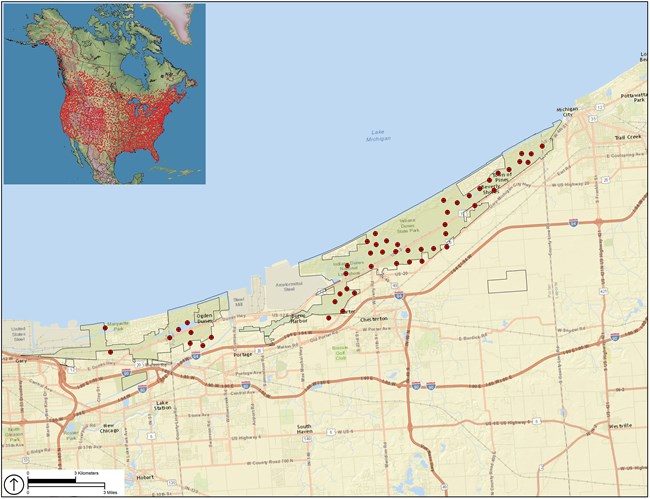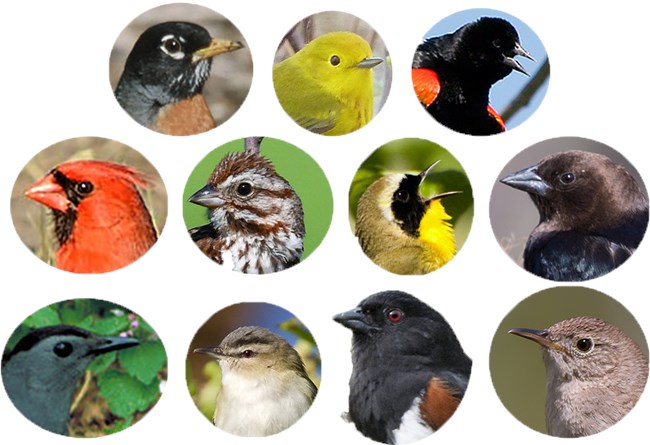Last updated: August 2, 2024
Article
Songbird Monitoring at Indiana Dunes, 2014-2018

Map by Eastern Ecological Science Center
www.usgs.gov/media/images/bbs-routes-across-north-america
The National Park Service is not a formal partner in this large-scale effort, but Indiana Dunes National Park has participated in the surveys since 1993. The route known as “Indiana Dune (35901)” is one of more than 4,100 survey routes across the continental U.S. and Canada (www.pwrc.usgs.gov/bbs/about/). NPS and USGS staff and volunteers have worked together over the past 28 years to document 121 species during these annual surveys.

NPS photos
2014–2018
The 50 point-count stations in Indiana Dunes National Park were visited once a year in 2014 through 2018, following the North American Breeding Bird Survey protocol. All but three points were completed across the five years, resulting in a total of 247 completed counts.A total of 85 unique species were detected during these counts, with an average of 58 species over the five-year period. Eleven species accounted for 50% of all the birds detected during the five-year period.
What Will the Future Sound Like?
One study comparing bird population changes under two different climate scenarios predicted high turnover of species populations at Indiana Dunes by mid-century (2041–2070) if the nation continues on its current path of rising emissions1. Some species, like the American Robin, have a mixed outlook; they are predicted to do better in winter than in summer. Others such as the Yellow Warbler and Song Sparrow are predicted to disappear from the area during the summer nesting season (though the Song Sparrow may become more common in winter). Red-winged Blackbirds, while seemingly unaffected during the summer breeding season, are predicted to become more common in the area during the winter. Interestingly, three species that were only observed once during the 2014–2018 surveys are predicted to increase in numbers: the Dickcissel (observed in 2014), the Prothonotary Warbler (2014), and the White-eyed Vireo (2018).The forests, savannas, and wetlands at Indiana Dunes will still ring with bird song, perhaps from some species more than ever before.
